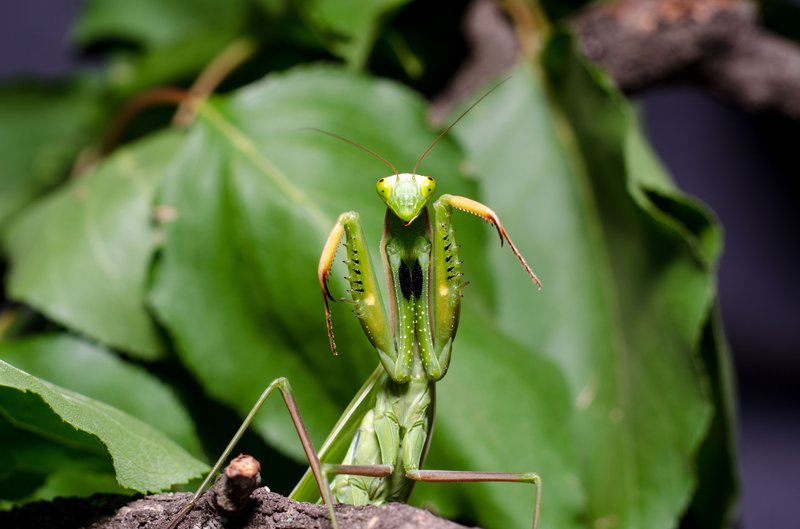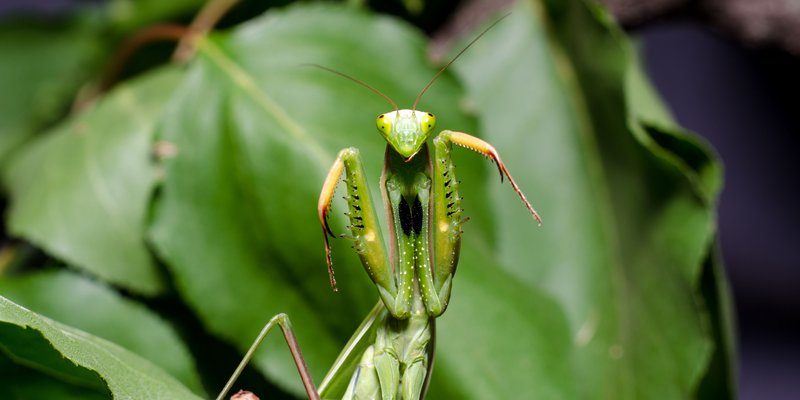
Imagine sitting in a cozy café, sipping coffee while discussing the mantis. You’d probably think, “What’s the real deal with these little predators?” Are they really as scary as some stories suggest? Do they have superpowers? Let’s dive into the most common myths about the praying mantis and separate fact from fiction.
Myth 1: Praying Mantis Are Dangerous to Humans
One of the most widespread myths is that praying mantises can be dangerous to humans. It’s easy to see where this idea comes from; after all, they have those sharp front legs, and their hunting skills can be impressive. But here’s the thing: mantises aren’t out for human blood. They primarily feed on insects, and while they might give you a little pinch if you handle one, they are far from dangerous.
You might be wondering, “What if a mantis bites me?” The truth is, a praying mantis bite is incredibly rare. If you’re in a situation where you’re holding one, it’s more likely to try and escape than attack. Besides, with their small size and fragile bodies, they pose no threat to us at all. In fact, they can be great for gardens because they help control pest populations.
Myth 2: Praying Mantis Eat Each Other
Another popular myth is that female mantises eat their mates right after mating. This idea is so common that it feels almost like a rite of passage for male mantises! While it’s true that some females have been known to munch on their partners, it doesn’t happen all the time. This behavior is more about survival than a horror scene.
Let me explain: in some cases, when a female mantis is hungry, she might eat the male after mating. This can provide her with nutrients to support the development of her eggs. However, lots of mating occurs without this gruesome outcome. In fact, many males successfully mate and then escape. So, while a bit of cannibalism can happen, it’s not the norm.
Myth 3: Praying Mantis Are Slow Movers
You might picture a praying mantis as a slow-moving creature, creeping stealthily around your garden. The truth is, while they do have a graceful gait, they can be quite fast when they need to be. In fact, their speed is one of the things that makes them excellent hunters.
Praying mantises can strike their prey in a fraction of a second. They use their sharp forelegs to snatch insects, and they’re surprisingly nimble. Think of them like little ninjas! So, if you ever spot one, don’t underestimate its speed. They may look calm, but they’re always ready to make a quick move when it counts.
Myth 4: All Praying Mantis Are Green
When you think of a praying mantis, the green ones might spring to mind. But did you know that they come in various colors? That’s right! Praying mantises can be brown, green, yellow, and even have some spots or patterns. This diversity helps them with camouflage.
In nature, color is everything when it comes to survival. Depending on their environment, a mantis may adapt its color to blend in better with surroundings. For instance, green mantises do well among leafy plants, while brown ones can hide on tree bark. It’s a perfect way of avoiding predators, making them even more fascinating.
Myth 5: Praying Mantis Can Predict the Weather
Some people swear that a praying mantis can predict the weather. They point to the insect’s behavior, claiming that if mantises are seen swarming, a storm must be on the way. While insects can react to changes in the environment, saying they can predict the weather is a stretch.
What actually happens is that, like many animals, mantises may sense shifts in humidity or wind that come with changing weather. That might cause them to congregate or act differently, but it’s not a reliable way to forecast. So, if you’re hoping for a weather report from your garden mantis, you might need to stick with the local meteorologist.
The Importance of Praying Mantis in Ecosystems
Despite the myths, praying mantises play a crucial role in maintaining balance in ecosystems. As *predators*, they help control pest populations, benefiting gardens and crops. Many gardeners welcome mantises because they help keep harmful insects in check.
Here’s the thing: mantises are part of a larger food web. Birds, frogs, and some mammals will feast on them when they get the chance. This predatory behavior helps keep various insect populations under control, promoting a healthy environment. So, instead of fearing mantises, we should appreciate them for their contributions.
The praying mantis is an extraordinary creature, often misunderstood due to widespread myths. From the misconception that they’re dangerous or slow to the belief that they can predict the weather, it’s clear that some stories just don’t hold up under scrutiny. These bugs have a unique role in nature, and understanding them better can help us appreciate their presence.
So the next time you spot a praying mantis in your garden or out in nature, take a moment to watch and marvel at this little ninja. They might not be as scary as they seem, and with the truth in hand, you can enjoy knowing exactly what these incredible insects are all about.

